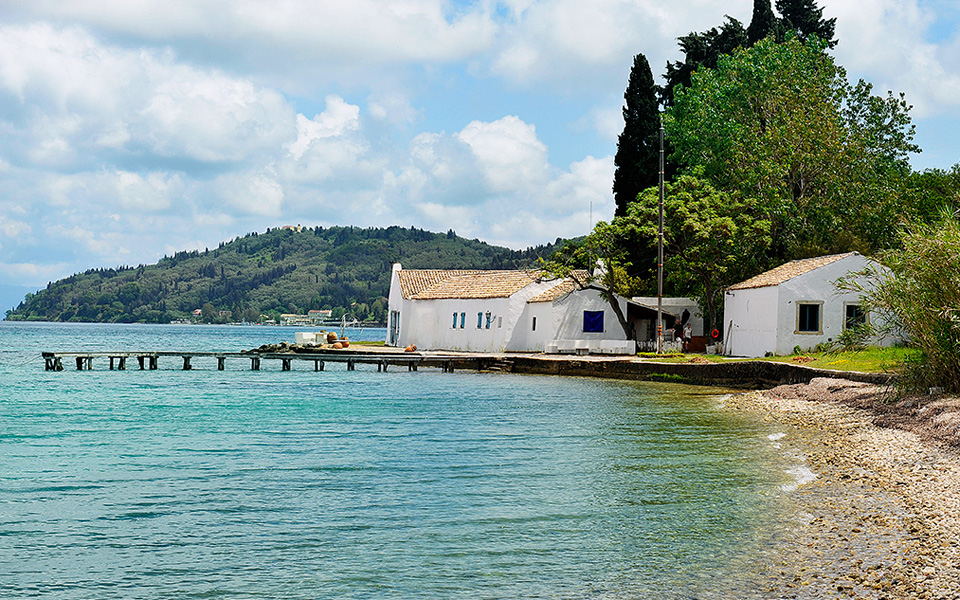Houses colored in all the shades of red stand amid a labyrinth of alleyways. The wider area’s endless olive groves highlight the unadulterated nature. Sand dunes covered with lilies encounter lakes with flamingos, while the endless beaches, featuring golden sand, dunes and orchids, paint a uniquely beautiful landscape. Corfu’s south, an area that has managed to hold back the effects of time, is graced with an overall sense of old-fashioned charm. Our tour begins at the Olive Museum in the village of Kynopiastes. Until the 1970s, it was operated as an olive press and was part of an olive grove with hundreds of olive trees on an estate belonging to the Paipetis family, whose mansion was built here. It was donated to the municipality and transformed into a museum in 2011.
The olive oil-producing process is displayed with an exhibit that includes an impressive array of tools, while old photographs depicting the previous century’s agricultural life are also on display. Look out for an enormous ancient olive tree just a couple of hundred meters away. At the village center, the Taverna Trypa, which has represented local culinary ways for some 80 years now, is an ideal place for a special Corfu meal.
Departing from Kynopiastes, take the road headed for the city until reaching the road sign that indicates the way to Lefkimi. Immediately after turning, is the Hrysiida area, where an elderly woman continues to cultivate and sell a species of Corfiot mini strawberries –very small in size yet fragrant, delicious and scarce– from a roadside bench.
Once over Kaiser Bridge – an architectural masterpiece built during the reign of Wilhelm II, Germany’s last emperor, who owned a summer residence on the island – the steel gate on the right hand side, slightly down the road, fronts the residence of Viaros Kapodistrias, a descendant of Ioannis Kapodistrias, the first head of state of independent Greece (1827-31). The property is nowadays resided by the former’s daughter. Next in line in the area is the Giustiniani-Flabouriaris-Mannesis mansion, where the Empress Elisabeth of Austria apparently liked to enjoy tea.
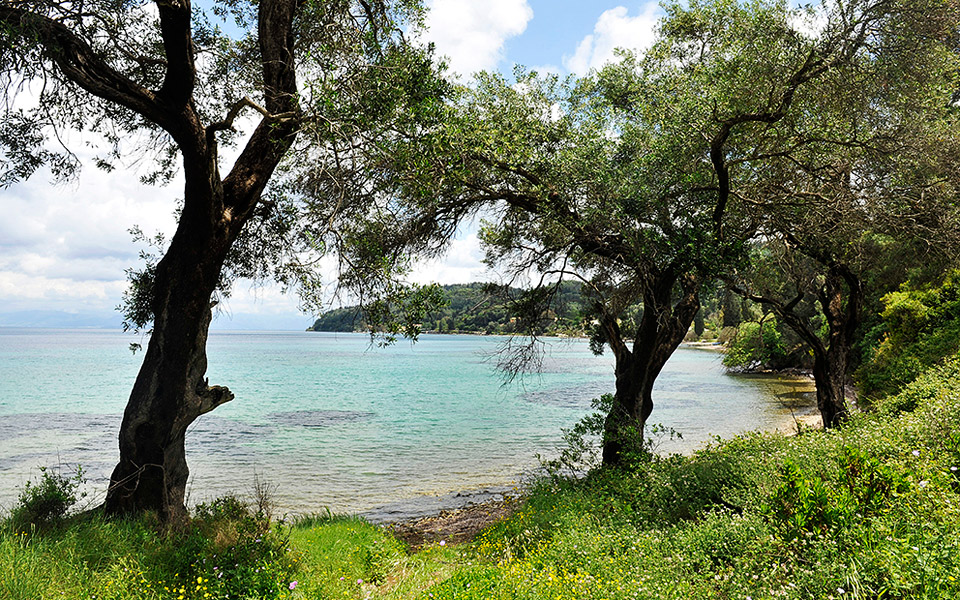
© Julia Klimi
Fresh fish and a magical view
Heading on from Benitses and Mesonghi, turn left for Boukari. The road soon narrows and the olive trees stand virtually next to the water. The cinematic setting is conjured up by the little fishing boats and local fishermen untangling fish from their fishing nets at the small port, also named Boukari.
Corfiots visit Boukari to enjoy the fresh fish served at the Karydis taverna, set up with just a modest number of tables by the water’s edge. Big groups tend to be served specialties such as bianco grouper fish (roko), prepared in a lemon sauce, garlic and potatoes, in a casserole brought out to the table. Other seafood delicacies at this authentic fish eatery include bourdeto, usually comprised of red scorpion (skorpios) in spicy red sauce.
The dilapidated Palatianos mansion is located to the left, at Korakades. Directly above Boukari, the winding road running through a cluster of bright-colored houses leads to Hlomos, one of the island’s most beautiful and oldest villages. The elevated edge, where the Agios Michail church sits, offers an incredible view.
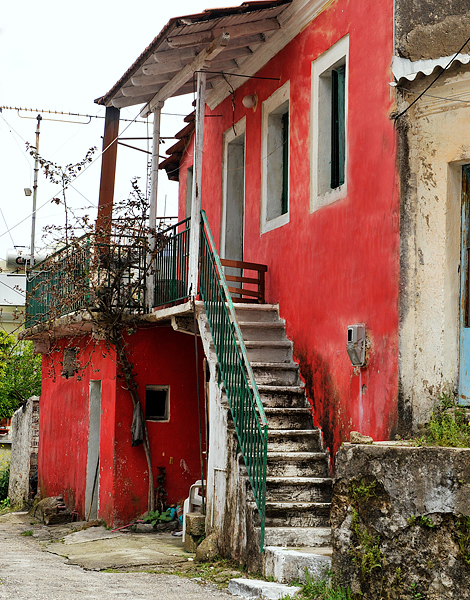
© Julia Klimi
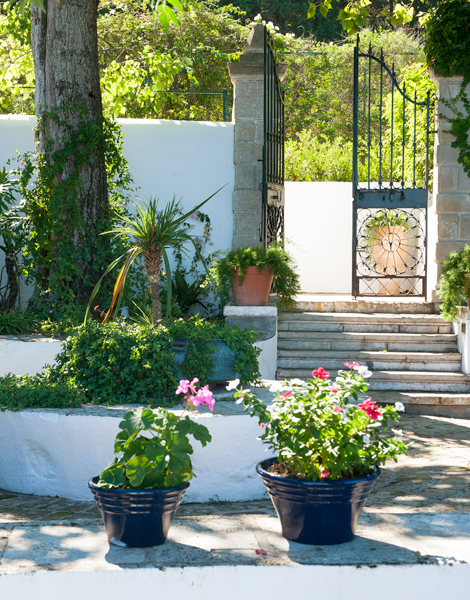
© Julia Klimi
Carry on along the main road headed towards Mesonghi. Turn left for Halikouna at the petrol station by the bridge. The dirt road leads to the octagonal 13th century Byzantine-era Gardiki Castle. The ruins of its old ancient walls inside, as well as the remaining parts of ancient temples embedded in the walls, are captivating.
Above the fortress, at the foot of the Mt Agios Mattheos, the impressive Grava Gardiki cave offers a sensational view of Lake Korission. The earliest signs of human presence on Corfu – tools and other artifacts dating back to the Paleolithic era (30000-10000 BC) – were discovered at this location.
From the castle, take the road next to the sea on foot to reach Lake Korission. The Alonaki taverna, hidden amid the reeds and plants, recalls bygone days when vegetables came straight from the garden and any fish ordered depended on the catch of the day.
Besides the fresh fish recipes – such as bianco grouper fish (roko) in lemon sauce and bourdeto – and tsigareili (wild greens with red pepper), served in hearty portions by the owner Mr. Michalis, his spouse makes incredible sweets, including galaktoboureko (semolina custard in filo), revani (syrupy semolina and yoghurt cake) and ekmek (custard and whipped cream pastry with syrup). Apart from the food the sea view is fabulous.
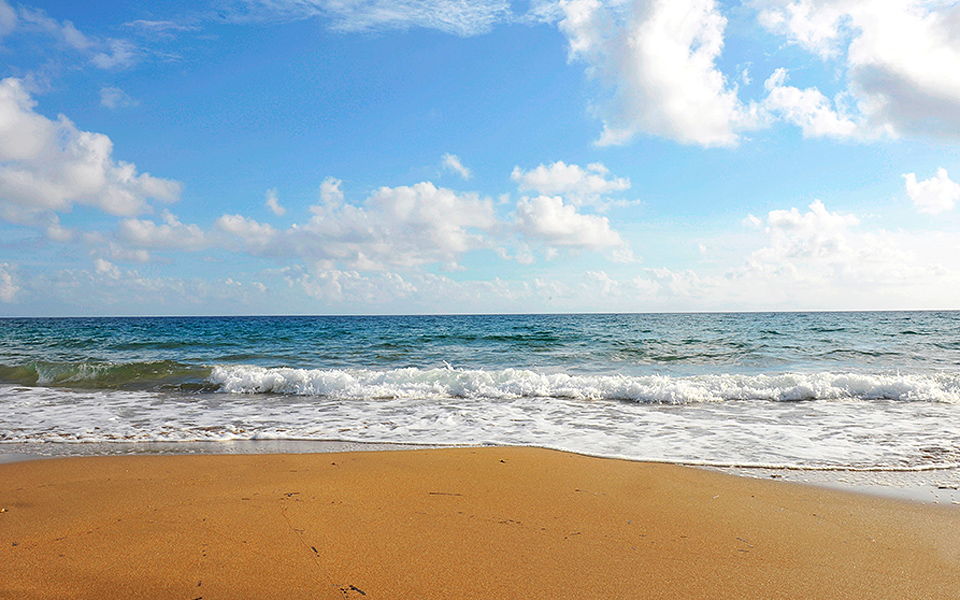
© Julia Klimi
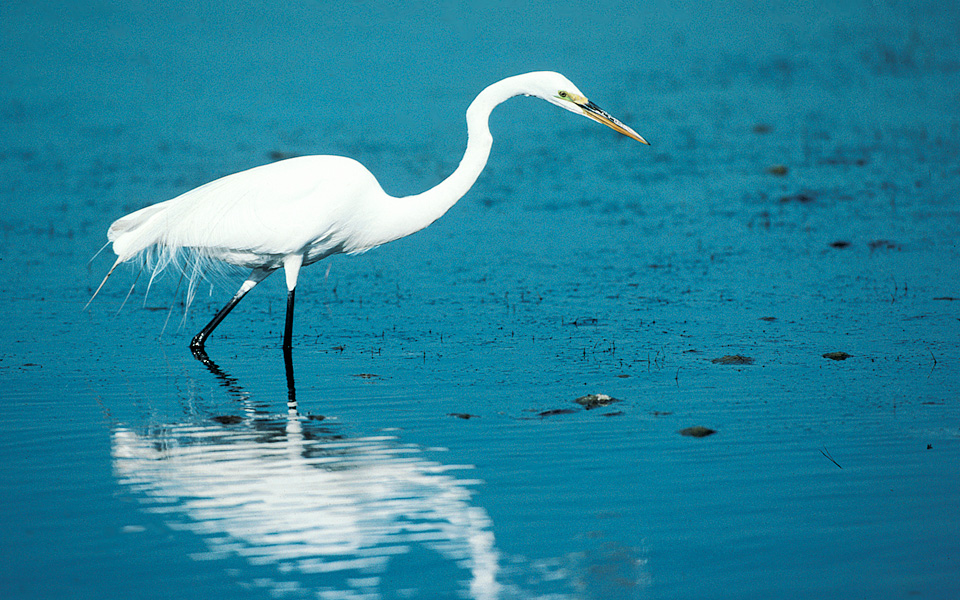
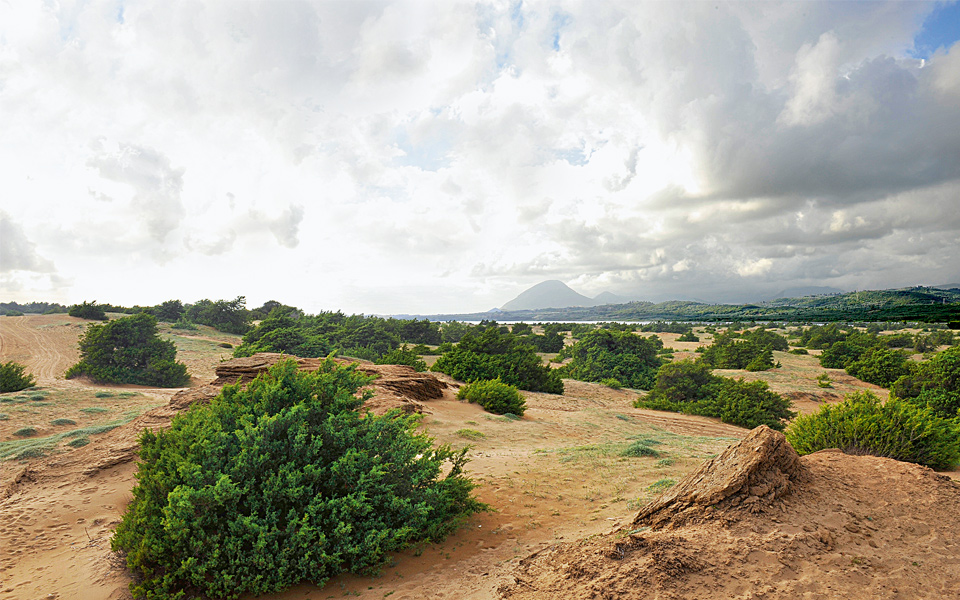
© Julia Klimi
Sand dunes and flamingos
The overall setting at Lake Korission and Halikounas beach captures the essence of the island’s beauty in the south. At Halikounas beach, one side is endowed with golden sand, sand dunes and crystal-clear water, stretching for about 10k, opposite the other side’s lake water. The water is relatively warm even during the spring season, while remote spots can always be found in the summer for complete relaxation and sense of freedom, accompanied by the Ionian Sea breeze. Visitors should keep in mind that, quite often, stronger winds transform the place into a kite surfing paradise.
Covering an area of 600 hectares, Lake Korission, a lagoon protected under the EU’s Natura system, is a wetland for over 120 bird species, including cormorants, egrets, flamingos and ducks, as well as thousands of butterflies. A road running between the lake and beach ends up at a cave used as a fishing facility by the area’s fishermen. Equipped with their little boats, they fish for eels, sea bass, mullet and shrimp around the reeds. The narrow strait, connecting the sea and lake, is referred to as the tagio by locals. Crossing the small wooden bridge leads directly to a magical cedar forest with sand dunes, exceeding 15 meters in height. These enormous sand dunes, covered in wild lilies, bring the vastness of the Sahara desert to mind. Once out of the cedar forest, the Issos beach, also known as Nyssos, is another long stretch of golden sand, which is, unfortunately, interrupted by the construction of a gigantic, mass-tourism hotel.
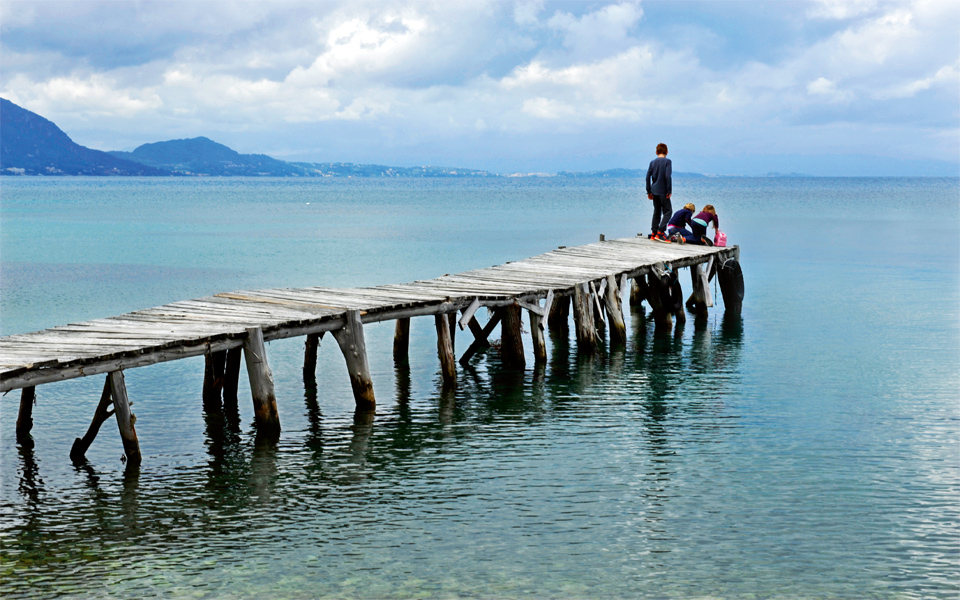
© Julia Klimi
Towards Cape Arkoudila
Vioporos, an organic farm run by Kostas and Agathi Vlassis, is located across the other side, in Vraganiotika, which is the best place to enjoy the lake. This village offers a mesmerizing view of life in the wetland. Agathi prepares food using produce straight from the duo’s farm, cultivated by Kostas.
Lucky visitors accommodated here begin their day with bread baked in the wood-fired oven, fresh eggs, olives, honey, fruit juices, marmalades and pies. Besides the pies, definitely try the papoutsakia (eggplants filled with mince and topped with béchamel), mousaka without mince, and Corfiot pastitsada (spaghetti with rooster, from the farm, in red sauce). Accompany your meals with a glass of kakotrygi (local white wine) made by the neighboring Livadiotis winery. Exploring the farm’s seven hectares reveals many surprises, including beehives, old agricultural tools, horses, sheep, rabbits, even works of art created by a German artist along the lake’s edge. Guests may participate in seasonal farm activities, cooking lessons, as well as soap-making workshops.
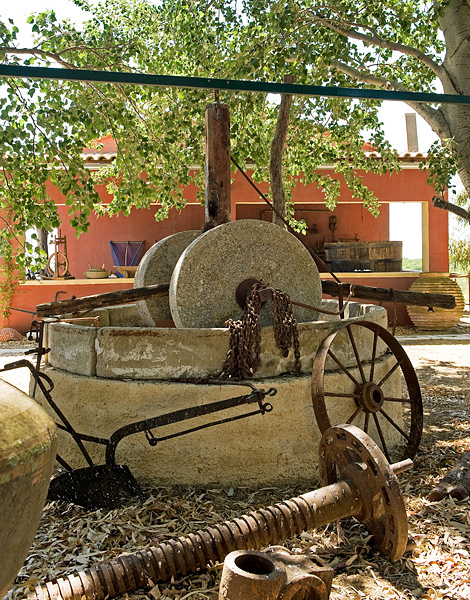
© Julia Klimi
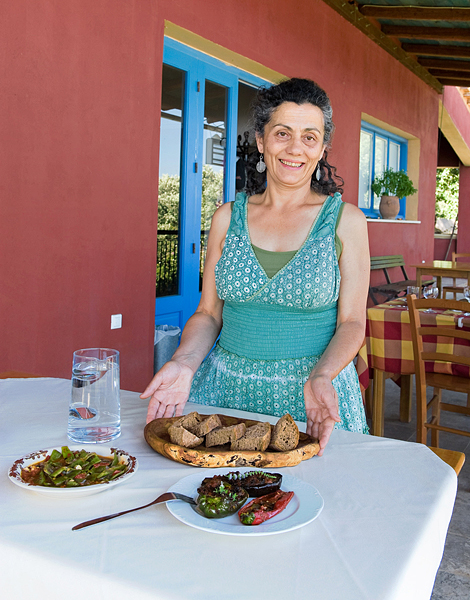
© Julia Klimi
Further on, numerous picturesque villages and settlements are worth spending some time at. These include Rigglades, Anaplades, Aghii Thodori, Paleohori,and Melikia, home to impressive 15th century murals.
Lefkimi is the region’s main attraction. A small canal that runs through the center is ideal for a romantic venture. Grandmothers in traditional farm attire may be seen here.
A number of old customs are maintained in Lefkimi, such as the ancient Greek karnavali festival, as well as baletes and kantrilies, old French dances performed at the numerous traditional celebrations in the summer months.
Taking the trail beginning from Spartera for about 40 minutes, through cypress trees and lentisks, leads to the island’s southernmost point. The Venetian “Panagia Eleousa” monastery in the area, dating back to 1710, was used as a fortified firing position by Greek forces during World War II. The canons that had been installed are still there. End your forest walk at Cape Arkoudila, a sudden cliff over the sea, which is said to be named thus from the French phrase “arc d’isle” meaning arc of the island. The view is breathtaking.

